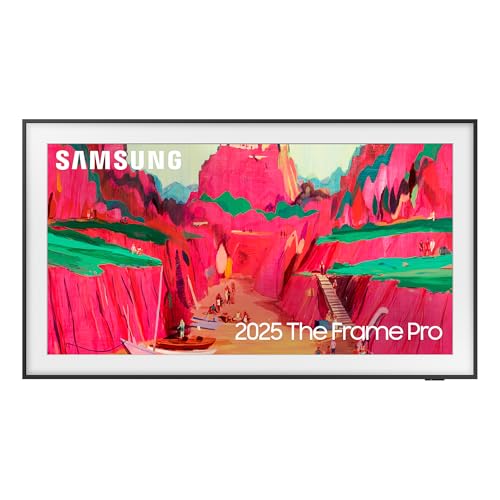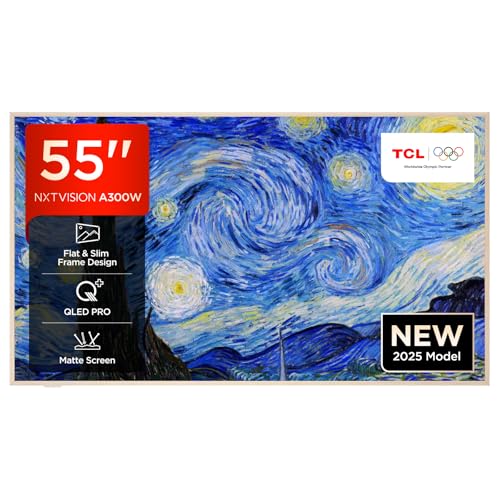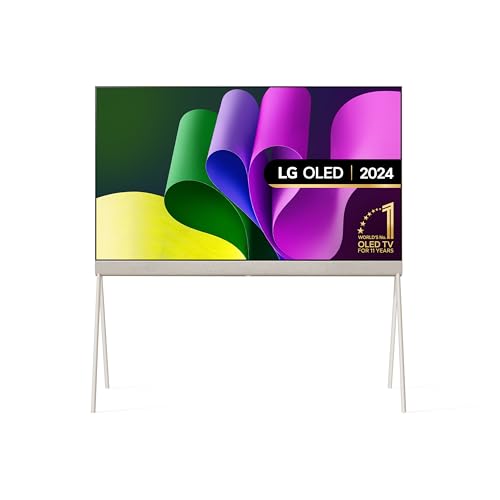What Are the Best Samsung Frame Alternatives? Here's Why You Should Consider Other “Art TVs”, too, Before You Buy
Samsung tapped into a winning formula with The Frame, but now others are getting in on the act
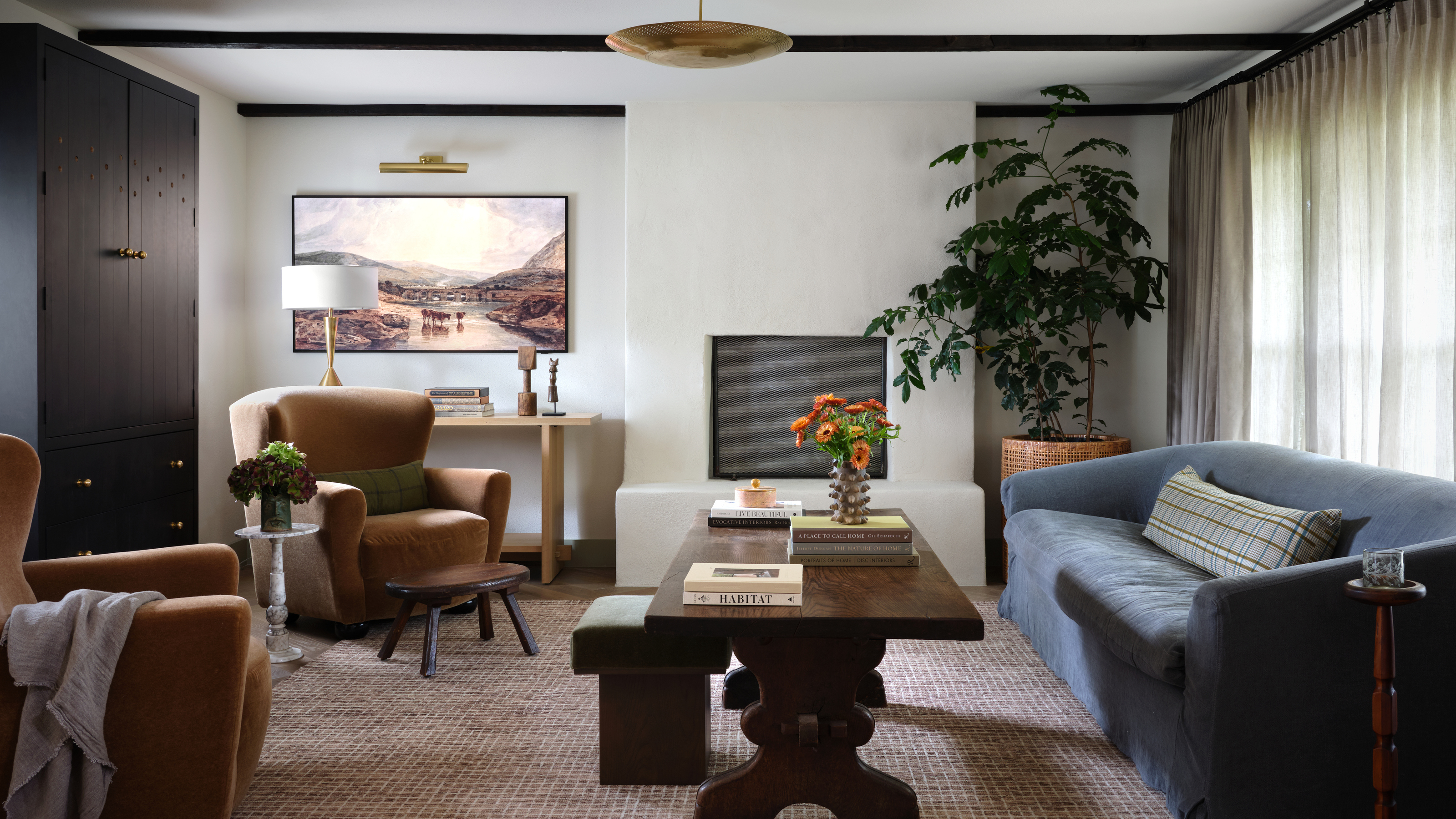

For those who care about interior style, TVs present a difficult challenge. While we no longer have to contend with the boxy CRT monstrosities of the 80s and 90s, the flat-screen panels available today have gotten wider and wider.
You’re hard pushed to find a TV smaller than 40 inches these days, and while that’s good for enjoying the latest Netflix blockbuster, the larger the panel, the bigger the eyesore when turned off.
In 2017, Samsung struck gold with a compromise solution: The Frame — a TV that hides in plain sight — and followed a whole host of Samsung Frame alternatives that promise the same idea. With an ultra-thin profile, a changeable wooden frame, matte screen, and minimal wires, it’s designed to mimic wall-mounted art when not in use.
While it won’t fool anybody into thinking you don’t have a TV, it minimizes the impact of a big screen and creates talking points when not in use, with a range of aesthetically pleasing artworks available to download and display. It does come at a cost, however, with the latest 2025 The Frame starting at £949 for the 43-inch model, rising to £1,599 for the 65-inch version.
Other brands are now getting in on the act, so should you consider them instead? Here are the major alternatives to Samsung's The Frame, with their various pros and cons.
The Frame Pro
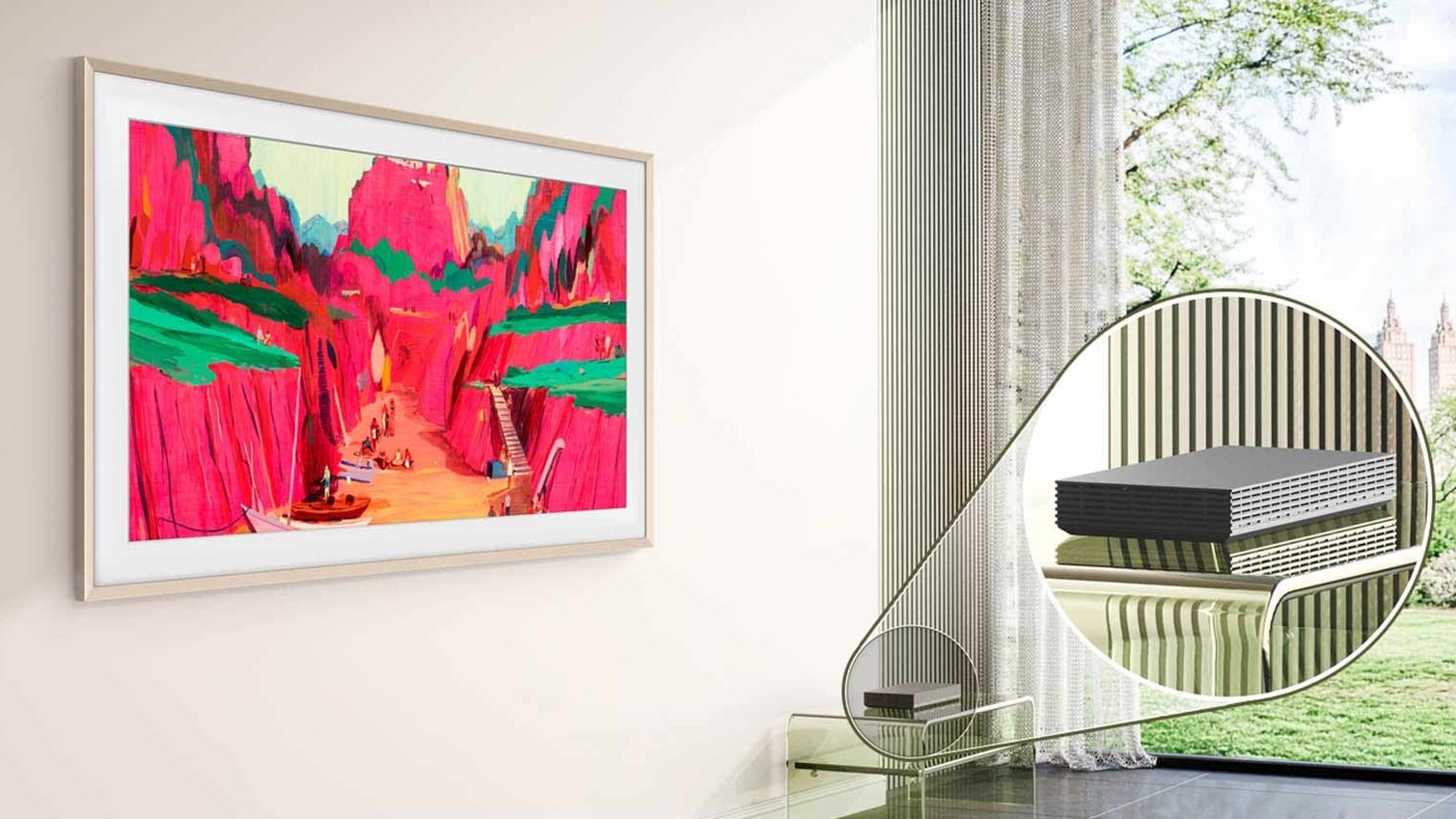
Pros
- Better brightness and contrast with Neo QLED
- Larger sizes
- Wireless One Connect Box
Cons
- More expensive
Let’s start with Samsung’s own Frame alternative — The Frame Pro. As the name suggests, it’s aimed at those who like The Frame concept, but want more in the way of performance.
Comparing The Frame vs The Frame Pro, the latter upgrades the panel to Neo QLED technology boosting both brightness and contrast. It also includes a wireless One Connect Box, reducing the number of unsightly cables you need in the TV itself to just a single power lead.
The Livingetc newsletters are your inside source for what’s shaping interiors now - and what’s next. Discover trend forecasts, smart style ideas, and curated shopping inspiration that brings design to life. Subscribe today and stay ahead of the curve.
But there are caveats. Firstly, while Samsung calls this technology Mini LED, you shouldn’t expect the same performance as with its regular Neo QLED panels. Here, the Mini LEDs are at the bottom of the screen firing upwards, rather than behind the entire display making brightness less tightly controlled.
Secondly, The Frame Pro is only available in three sizes: 65, 75 and 85 inches, priced at £1,799, £2,599 — with the 85-inch model on the Samsung website for £2,799. Not only will that only suit those with larger rooms, but it’s a big price tag for something that won’t deliver the AV performance of a cheaper OLED or Mini LED set.
HiSense CanvasTV
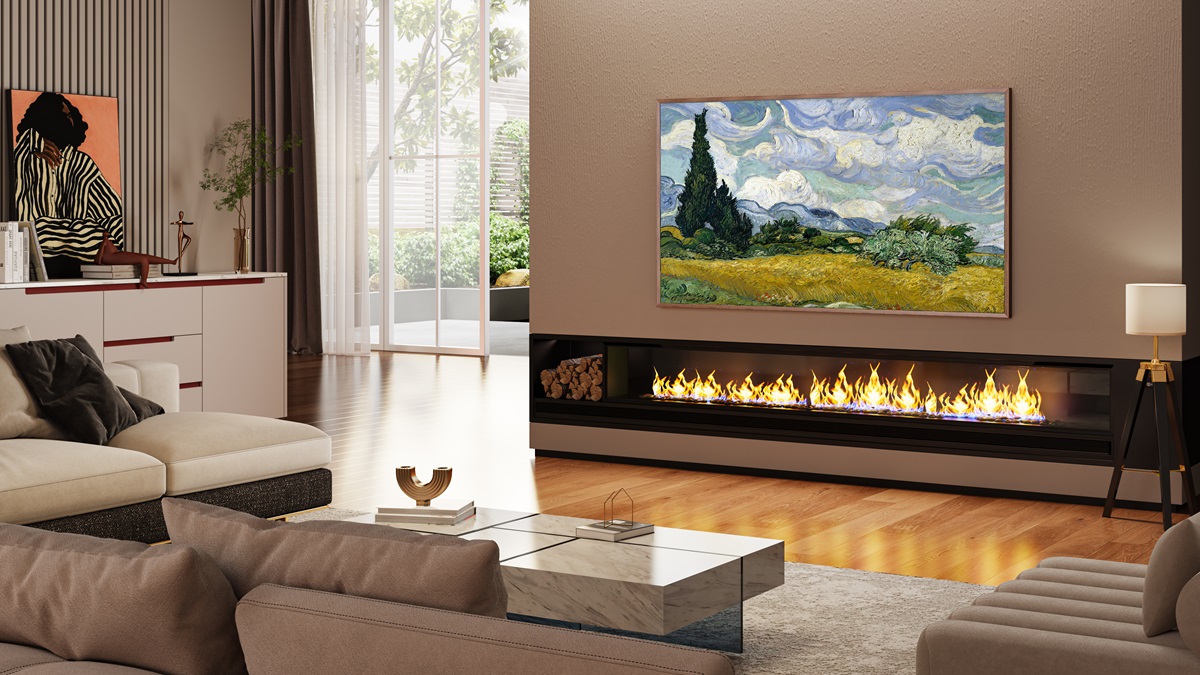
Pros
- Cheaper than The Frame
- Support for HDR10+ and Dolby Vision
Cons
- Fewer size options
- No One Connect Box equivalent
- Weaker video performance
- Limitations of UK model
HiSense CanvasTV was the first like-for-like competitor to The Frame when it was announced last May, and it features the same anti-glare technology to imitate the texture of real paintings.
As with The Frame, it features a 4K QLED panel with support for ALLM, VRR, and multi-channel surround sound. You can also switch out the magnetic edges to freshen up the look and match your room’s aesthetics. A teak-effect frame is included in the box, but you can buy different ones to spruce things up if you like.
It has two big advantages over The Frame: HDR compatibility and price. For the former, it supports both HDR10+ and Dolby Vision, while The Frame only recognizes the first. That means that content encoded for Dolby Vision should look better on CanvasTV.
Secondly, it undercuts The Frame on price. Currys also currently has the 55-inch model available for £799, currently £200 off, while the 65-inch version is on sale for just £999 with £400 off.
There’s a drawback hidden in that paragraph: the HiSense CanvasTV is only available in two sizes: 55 inches and 65 inches. The Frame certainly has more variety, especially if you include the Pro models.
HiSense’s offering also misses out on the One Connect Box, meaning cable management is left to you, which could be a big problem if you have a lot of HDMI devices to attach. The art selection in the Art Mode app is smaller than Samsung’s Art Store, too.
Performance, too, is a bit weaker with The Frame offering improved contrast, brighter HDR performance, and better handling of reflections.
Finally, UK buyers should be aware that while the US model uses Google TV, across the Atlantic, it uses Vidaa. That not only means no Google TV apps, but distinct limitations as to the art you can profile when it’s not in use. As one Redditor puts it: “In Europe 30 photos max. That is it. No way to link Google Photos to TV.”
TCL NXTVISION
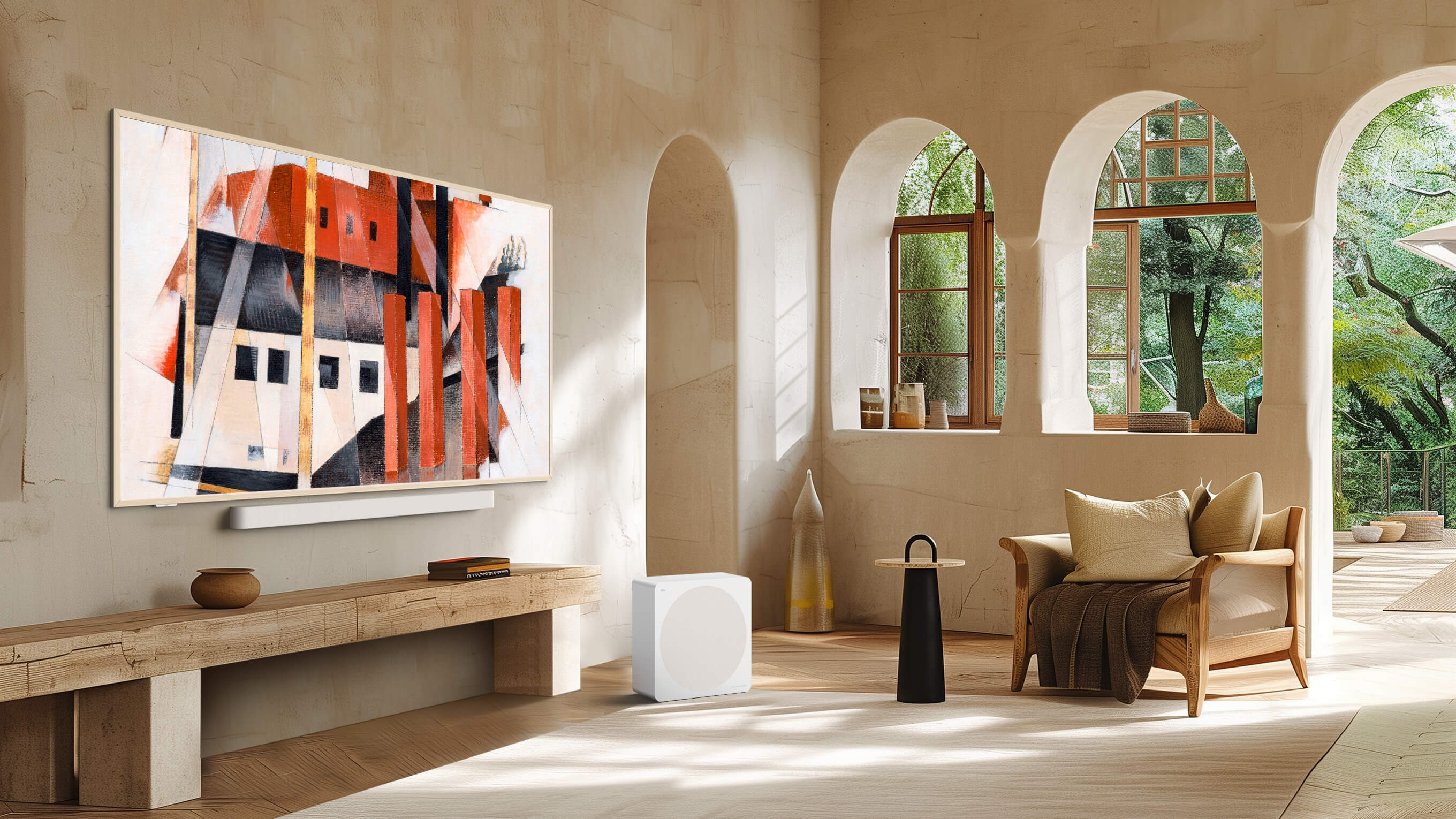
Pros
- The cheapest option
- Comes with a wooden frame in the box
- Support for HDR10+ and Dolby Vision
Cons
- Weaker video performance
- No One Connect Box equivalent
- Worse built-in sound
The TCL NXTVISION shares some of the same advantages of HiSense CanvasTV. It also supports both HDR10+ and Dolby Vision for HDR content, a birch frame is included in the box, and while it started out as more expensive than The Frame when it arrived in the US last year, for the UK launch, it’s substantially cheaper.
In fact, with current UK pricing, it’s even cheaper than CanvasTV. While TCL has the RRP set at £949 for the 55-inch model, £1,199 for the 65-inch version, and £1,799 for the 75-inch set, Argos currently has its "lowest prices ever" at £679 for 55 inches, £829 for 65 inches, and £1,299 for 75 inches.
It does, however, also share some of the drawbacks of CanvasTV, including that there’s no One Connect Box equivalent for cable management.
For those looking to live without a soundbar or external speakers, it’s also worth mentioning that the TCL NXTVISION TVs only have 20-watt speakers built in. For The Frame, models of 55 inches and up have 40W sound.
LG’s OLED range
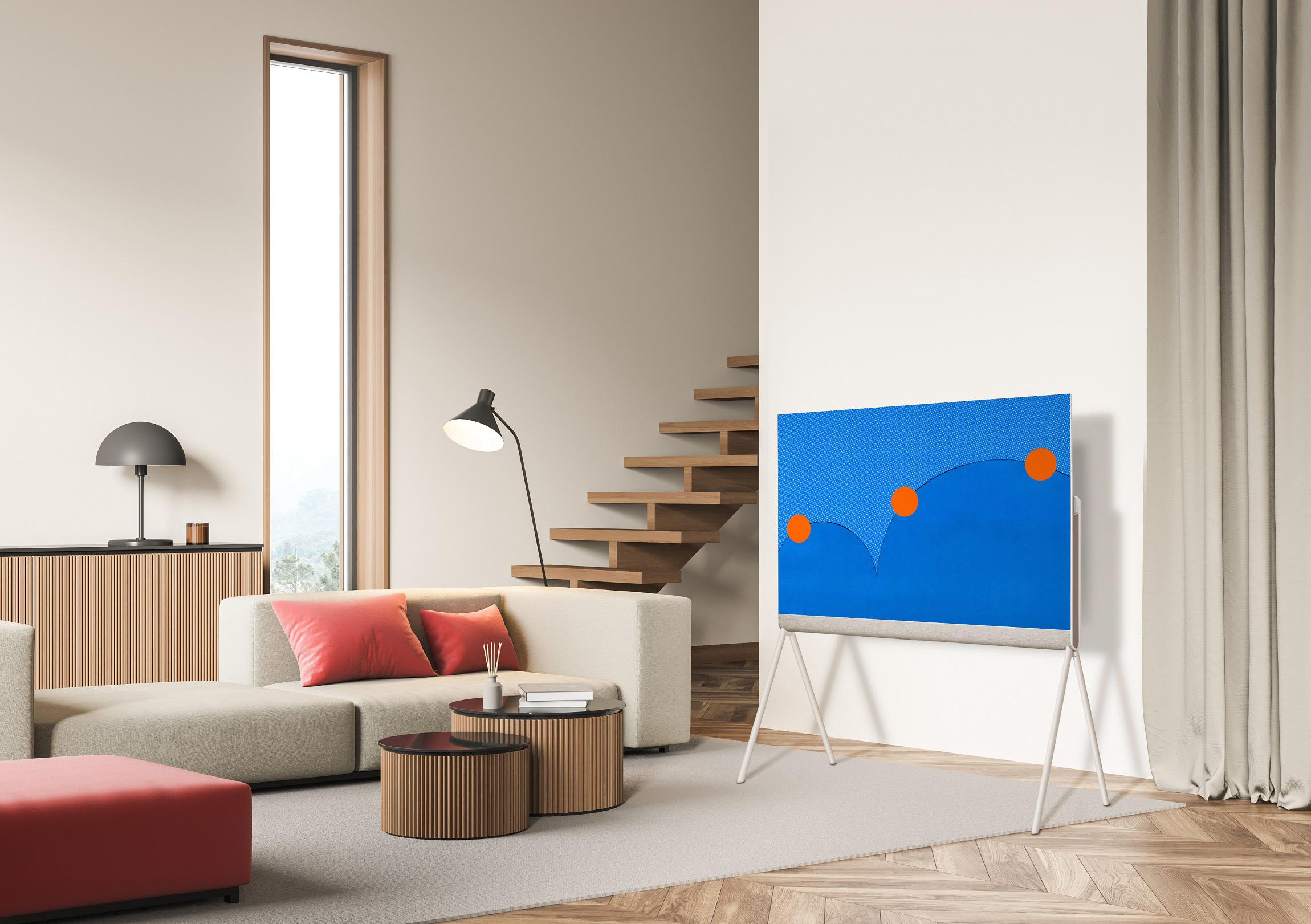
Pros
- Superior picture quality for TV and movies with OLED
Cons
- Not a matte display, meaning it’s fooling nobody in art mode
To be clear, LG has yet to offer anything quite like The Frame, even though the company has opened its own built-in art store to support its 2025 TVs. Perhaps that’s a sign that this will change in the next few years.
For now, however, things like the LG Pose and LG Evo G3 Gallery Edition share similar thin dimensions and bezels to The Frame, but the underlying technology is completely different: better for moving content, but worse for showcasing static art.
That’s because they use OLED panels, rather than matte QLED. OLED is regarded as the gold standard for cinephiles with its infinite contrast, but for moonlighting as an art canvas, it’s an active hindrance.
The panels are not only hugely reflective, but they’re also not designed to show static images for long periods, as that’s a recipe for OLED burn-in. That means any art will be cycled through quite quickly, ruining the hanging art aesthetic.
As TVs go, they’re still aesthetically pleasing — especially the £1,599 LG Pose, with its fabric base and four-legged stand — but they’re not really Frame alternatives in the literal sense. That might be perfect for you if you want the best TV-watching experience, of course.
Final thoughts
If you’re looking for an art-style TV, it appears The Frame is still the one to beat — especially if you have the budget and room size to justify The Frame Pro.
On balance, it handles video performance better than its matte alternatives, and static content better than the OLED LG TVs (which remain the choice if displaying art is only a minor concern).
But it is expensive, and it’s important to remember that subtle performance differences spotted by experienced tech reviewers may be impossible for most users to notice in real-world use.
From that perspective, you may want to save a few pounds by opting for something from HiSense or TCL. If money is tight and you want something big, the TCL NXTVISION 65A300W-UK QLED PRO 4K Ultra HD TV is currently being sold at £649.

Freelance contributor Alan has been writing about tech for over a decade, covering phones, drones and everything in between. Previously Deputy Editor of tech site Alphr, his words are found all over the web and in the occasional magazine too. He often writes for T3 and Tom's Guide. When not weighing up the pros and cons of the latest smartwatch, you'll probably find him tackling his ever-growing games backlog. Or, more likely, playing Spelunky for the millionth time.
